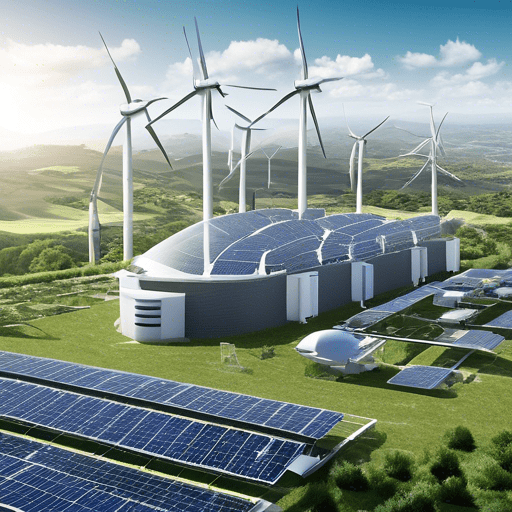In the grand symphony of building construction, HVAC (Heating, Ventilation, and Air Conditioning) design plays a vital role, often in

Sustainability has become a defining feature of modern architecture and construction. As the world shifts towards cleaner and greener energy solutions, the integration of renewable energy sources is at the forefront of MEP (Mechanical, Electrical, and Plumbing) engineering. In this blog, we will explore the significant role of renewable energy integration in MEP engineering designs, delve into the latest trends in this field, and discuss how these innovative practices can be applied to projects by experts like InnoDez, a leading company in MEP Design and Engineering.
One of the primary drivers of renewable energy integration is the urgent need to reduce carbon emissions and combat climate change. Renewable energy sources produce significantly fewer greenhouse gases compared to fossil fuels.
Traditional energy sources are finite, and their extraction can lead to resource depletion. In contrast, renewable energy sources like sunlight, wind, and geothermal heat are virtually inexhaustible.
Renewable energy sources promote energy independence, reducing reliance on foreign energy imports and enhancing a nation’s energy security.
By integrating renewable energy sources into MEP engineering designs, buildings and facilities can access a diverse range of energy sources, making them more resilient and adaptable to changing energy landscapes.
Renewable energy systems can significantly reduce long-term energy costs for building owners and operators, providing an attractive return on investment.
Renewable energy technologies often align with energy-efficient building practices, optimizing overall energy consumption.
Many green building certifications, such as LEED (Leadership in Energy and Environmental Design), reward projects that integrate renewable energy solutions.
Solar PV systems capture sunlight and convert it into electricity, offering a sustainable and cost-effective source of renewable energy.
Wind turbines harness the kinetic energy of wind to generate electricity. They are particularly beneficial in locations with consistent and strong winds.
Geothermal heat pumps use the earth’s stable temperature to provide efficient heating and cooling solutions for buildings.
Hydropower systems generate electricity from flowing water, making them an excellent choice for regions with abundant water resources.
Biomass energy utilizes organic materials, such as wood, agricultural residues, and waste, to produce heat and electricity.
The development of advanced solar technologies, such as bifacial solar panels and building-integrated photovoltaics (BIPV), enables more flexible and aesthetically pleasing solar energy integration.
Battery energy storage solutions enable the efficient storage of excess energy generated by renewable sources for later use.
Microgrids are small-scale, localized energy systems that combine renewable energy sources and storage to enhance energy resilience and reliability.
The implementation of smart energy management systems optimizes the use of renewable energy, ensuring efficient distribution and consumption.
Hybrid systems combine multiple renewable energy sources, such as solar and wind, to maximize energy generation and system reliability.
MEP engineers work closely with architects and sustainability experts to seamlessly integrate renewable energy solutions into building designs.
Renewable energy systems are subject to thorough performance analysis to ensure they meet project requirements and energy efficiency goals.
MEP engineers consider the integration of energy storage solutions, such as batteries, to optimize energy utilization.
MEP engineers ensure that all renewable energy installations comply with local building codes and regulations.
As experts in MEP Design and Engineering, InnoDez is committed to pioneering sustainable and energy-efficient solutions for our clients. Our expertise in renewable energy integration allows us to design and implement cutting-edge systems that reduce energy costs, lower environmental impact, and enhance energy independence. By embracing the latest trends and innovations in renewable energy, we contribute to a greener and more sustainable future for the built environment.
Renewable energy integration is no longer a choice but a necessity in the world of MEP engineering. By integrating renewable energy sources like solar, wind, and geothermal into building designs, MEP engineers play a pivotal role in creating sustainable, cost-effective, and environmentally responsible structures. The latest trends in renewable energy integration offer endless possibilities to enhance energy efficiency, reduce costs, and lower carbon footprints. As experts at InnoDez, we are dedicated to leading the way in this transformative field, driving the construction industry towards a greener and more sustainable future.
About Author
InnoDez